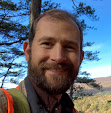When you're out hiking the trails it's often the visible animals like toads, snakes, and birds that capture our attention.
When the diet of animals like toads, snakes, and birds is considered it becomes clear just how important it is that there are healthy decomposing logs in our forests. Without the decomposing logs that host a buffet of arthropods, larger insectivorous animals would not have enough food. You can help by following Leave No Trace Principles the next time you build a campfire.One of the Leave No Trace principles is to minimize campfire impacts by gathering firewood that is dead, down, dinky, and distant. Dead and down means 1) no longer living and 2) on the ground. Dinky and distant means 1) smaller than your wrist in circumference and 2) collected at least 200 feet from your designated campsite.By following these Leave No Trace Principles in this way you can help to make sure that there will be community-supporting decomposing log communities all throughout our forests, even in proximity to designated campsites in the Adirondack Park.





No comments:
Post a Comment